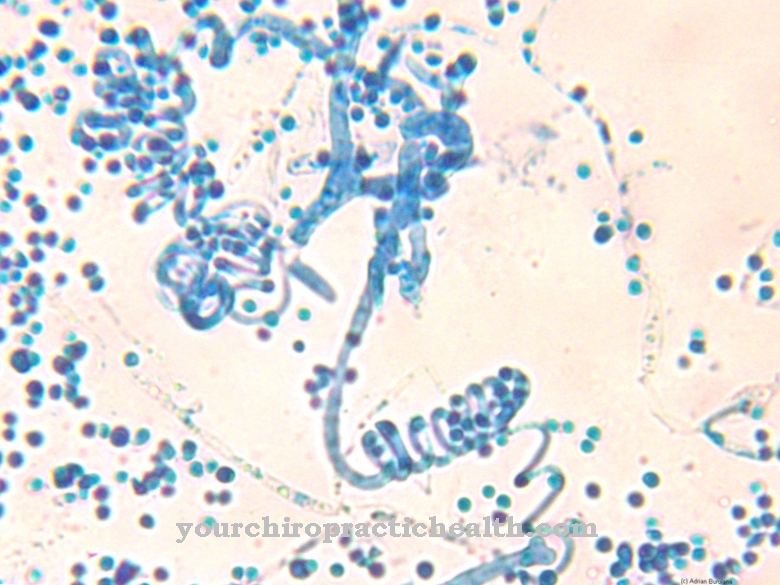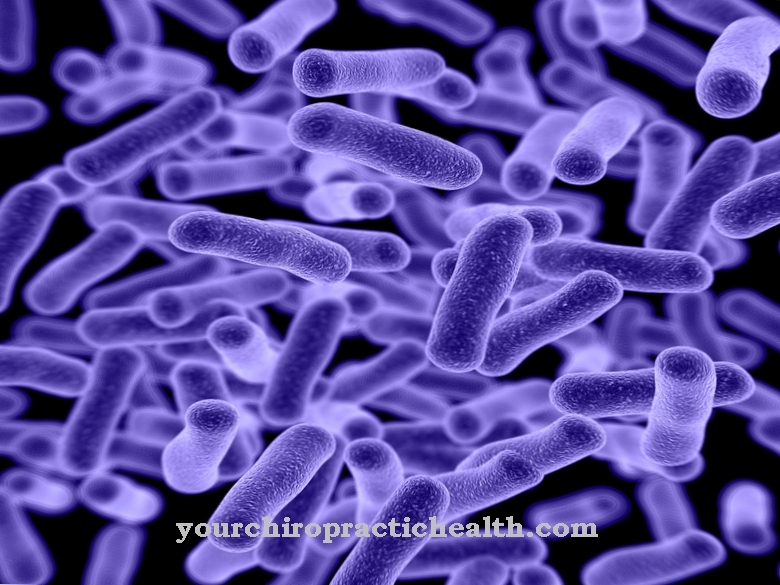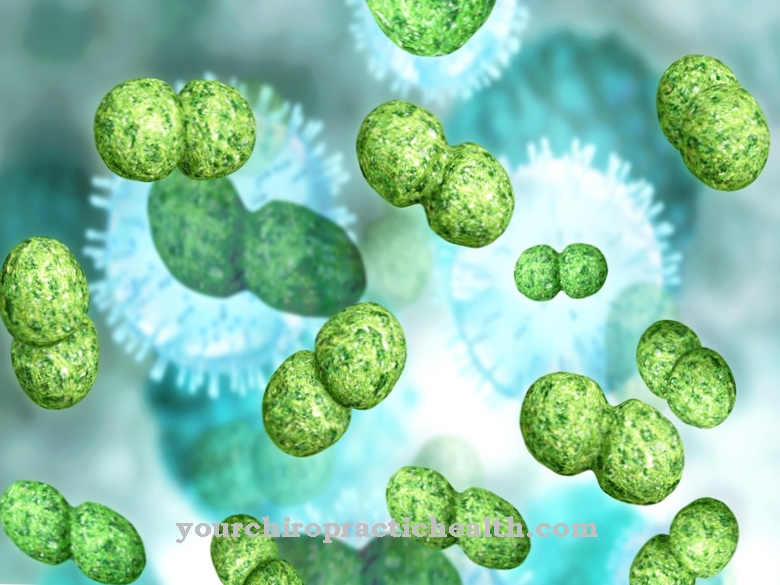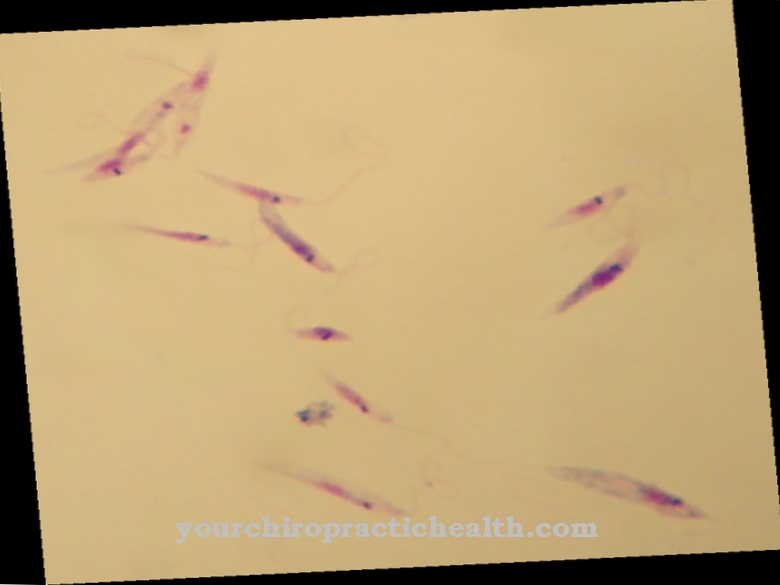Candida guilliermondii are a species of unicellular yeast that live as saprophytes and occur worldwide as airborne germs. Yeasts of this type colonize human skin as commensals, but can become an opportunistic pathogen in the event of immunodeficiency. They can cause mycoses of the skin, mucous membranes and intestines as well as candida sepsis and thus blood poisoning.
What is Candida guilliermondii?
Candida is a genus of yeast that belongs to the Ascomycota division and belongs to the Saccharomycotina subdivision. The genus is assigned to the class Saccharomycetes and falls under it in the order of the true yeast or Saccharomycetales and the family of the Inceratae sedis.
Candida comes in a total of around 150 different species. One of them is the species Candida guilliermondii. The fungus species is distributed worldwide and lives ubiquitously as airborne germs. The fungus forms colonies of elongated or cylindrical bud cells with a length between two and seven micrometers and a width between two and five micrometers.
In most cases, the yeast carries long and often coiled pseudohyphae. Along these pseudohyphae there are numerous, cluster-like blastospores of small size, especially on the septa. In addition, the species can form terminal chlamydospores. The growth resembles that of the related species Candida famata and appears in white-gray to cream-colored colonies with a smooth to matt finish.
Candida guilliermondii will also be Pichia guilliermondii called and belong to the saprophytes. The yeast type is a so-called opportunistic pathogen and can be pathogenic to humans. Like all yeasts, the Candida species are unicellular eukaryotic microorganisms that multiply by sprouting, dividing or splitting.
Occurrence, Distribution & Properties
Representatives of the yeast species Candida guilliermondii are airborne germs. As saprophytes, representatives of the species do not perform chemo- or photosynthesis. All yeasts are chemo-organotrophic organisms that operate their energy metabolism with energy sources from organic substances such as fructose, glucose, maltose or sucrose. They do not need sunlight for growth because of the lack of photosynthesis. The yeasts thrive best in a neutral to slightly acidic pH range.
Saprophytes such as Candida guilliermondii feed exclusively heterotrophically. So you need dead organic substances, which they break down into energy-rich substances and ultimately convert them to inorganic substances. The cells of all mushrooms are mostly oval in shape and are blastospores. Like all other yeast cells, the cells of Candida guilliermondii multiply by sprouting. From the respective mother cell, a certain area protrudes from the cell wall and thus forms a bud. A copy of the cell nucleus migrates into the individual buds, which is then completely separated from the mother cell.
Sprouts can form cell clusters if the conditions are favorable. The individual cells of these associations do not communicate via septa and are therefore not real mycelium, but are called pseudomyceles.
Meaning & function
The yeast species Candida guilliermondii is normally not a pathogen, but lives saprophytically with humans. As a harmless saprophyte or commensal, yeast neither harms people nor is it particularly useful. The yeast commensally colonizes human skin, which it reaches through the air. The yeast can also settle on the mucous membranes, in the gastrointestinal tract or in the vagina without causing symptoms.
In other words, people with a healthy immune system do not become infected. Before the yeast can spread dangerously, cells of the immune system recognize it as foreign and attack it. The pathogenetic significance of Candida guilliermondii is accordingly low.
Since there are mostly fluid boundaries between saprophytes and parasites, the harmless saprophyte can, under certain circumstances, become pathogenic and thus appear as a parasite. For this reason, Candida guilliermondii are called opportunistic pathogens, despite their widespread existence.
Illnesses & ailments
Immunodeficiency is a fact that can turn the actually harmless yeast species Candida guilliermondii into pathogens. Such immunodeficiency can be associated with diseases such as AIDS, but it can also be traced back to a weakening of the immune system due to diseases such as cancer or infections. In addition, there is often an immune deficiency based on age. In addition, the therapeutic approaches of some diseases suppress the immune system, for example in autoimmune diseases.
In immunodeficient patients, the yeast species can continue to spread without successful intervention by the immune system. Skin lesions in the sense of mycoses, nail infections and even intestinal mycoses can result. With intestinal mycoses of the inner mucous membranes, there is a certain risk of so-called candida sepsis. This is a fungemia, i.e. blood poisoning caused by fungi or, in this case, yeasts. Blood poisoning is a systemic inflammatory response that affects the whole body and can be a life-threatening condition.
The infection with Candida guilliermondii is in most cases an endogenous infection, as it is usually caused by yeasts that are already in the body. Lesions on the skin, nails, or hair are usually treated with antifungal drugs. The complication of Candida sepsis is associated with an unfavorable course and is treated with amphotericin B or, alternatively, liposomal amphotericin B. If these therapies fail, the administration of caspofungin, voriconazole, posaconazole or anidulafungin is necessary. Ideally, the patient's immune system recovers under certain conditions in order to be able to fight the pathogens independently.

























.jpg)


